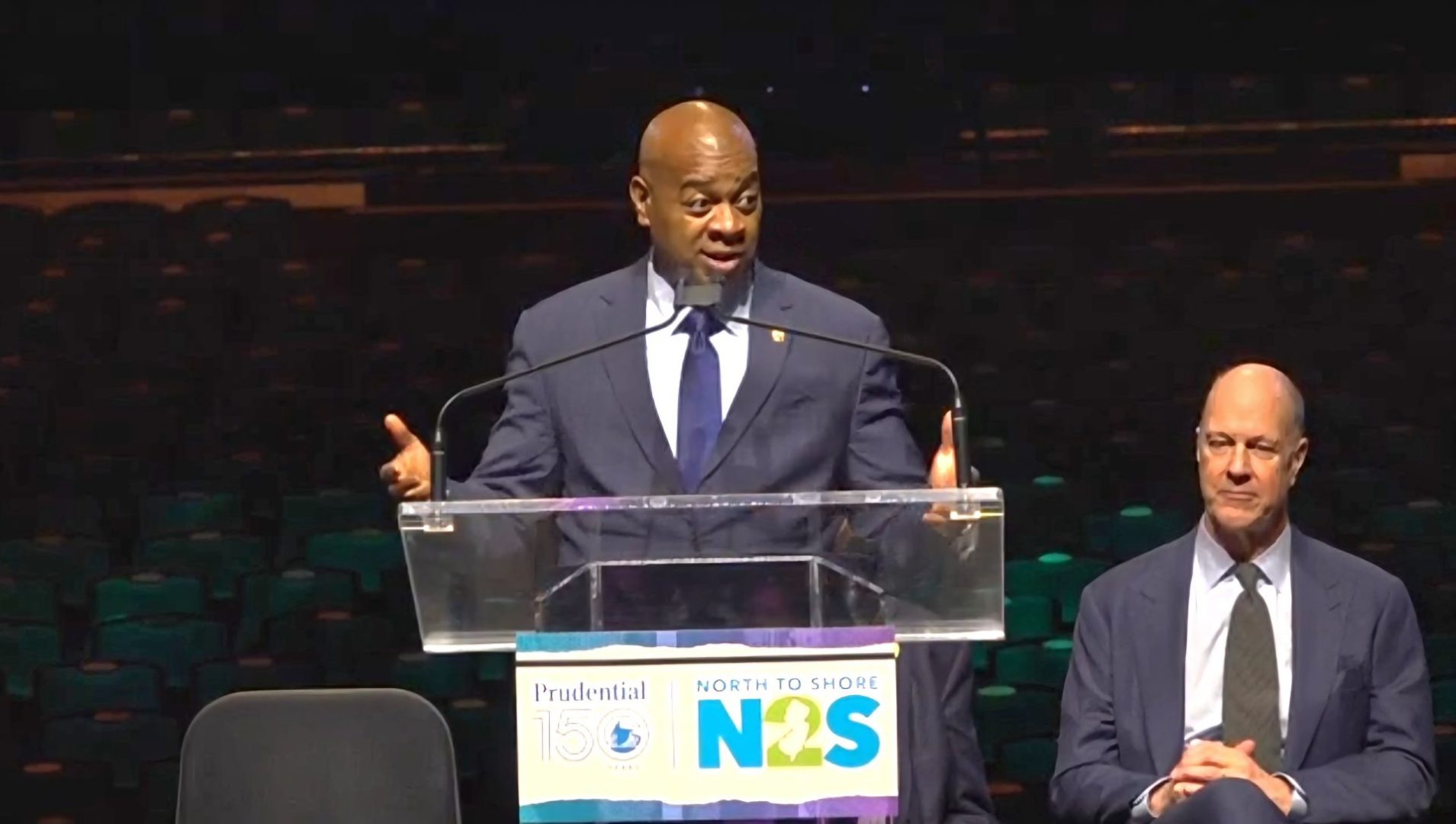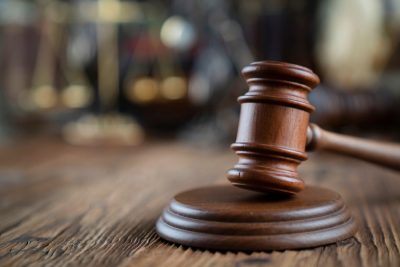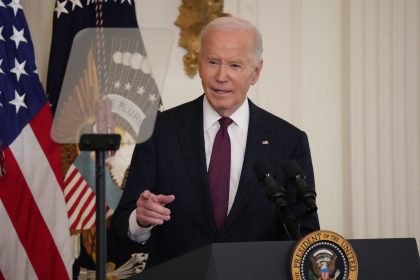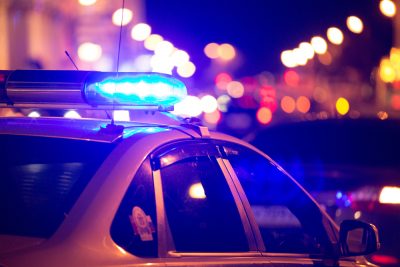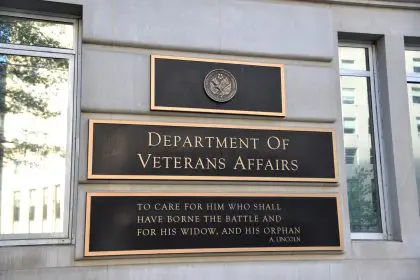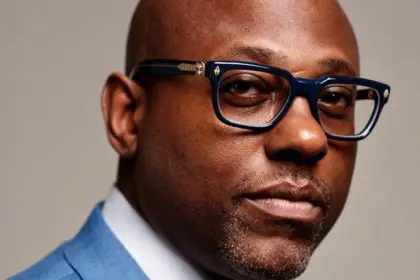That tense confrontation outside Newark’s Delaney Hall immigration detention center ended with an extraordinary scene Friday afternoon. Newark Mayor Ras J. Baraka, the leader of New Jersey’s largest city, was placed in handcuffs and taken into federal custody during what began as a planned congressional tour of the controversial facility.
The dramatic arrest, captured on video that quickly spread across social media, highlights the escalating conflict between local authorities opposed to immigration detention centers and a federal administration determined to expand them. As both sides present dramatically different accounts of what transpired, the incident raises significant questions about the boundaries between local governance, federal authority, and the right of elected officials to exercise oversight of detention facilities within their jurisdictions.
Federal officials on Friday arrested Baraka, a Democrat who is running for governor of New Jersey, after a confrontation that also involved three members of Congress at a new immigration detention facility that is expected to play a central role in President Trump’s mass deportation effort. This standoff represents just the latest flashpoint in a growing national debate about immigration enforcement that shows no signs of cooling down.
What actually happened at the detention center gates
The confrontation at Delaney Hall unfolded in a chaotic scene captured partially on video, with dramatically conflicting accounts emerging from different participants about the sequence of events leading to the mayor’s arrest.
A planned congressional tour formed the original context for the day’s events. Three Democratic members of Congress – Representatives Rob Menendez Jr., Bonnie Watson Coleman, and LaMonica McIver – had arranged an official visit to inspect the recently opened 1,000-bed facility. Congressional oversight of detention facilities falls within legislators’ responsibilities, with Representative Watson Coleman specifically noting on social media that they were “exercising our oversight authority to see for ourselves” conditions inside the center after hearing concerning reports about other ICE facilities.
Baraka attempted to join this congressional delegation for the tour, creating the initial point of tension. Federal officials maintained that while members of Congress had authorization to enter, the mayor did not have similar access privileges. Baraka has been a vocal opponent of the facility for months, with his office releasing statements as far back as February declaring that “Delaney Hall cannot lawfully open in Newark at this time” due to permit issues and stating that “an immigrant detention center is not welcomed here.”
The precise moment that transformed a verbal disagreement into a physical confrontation remains disputed by those involved. According to witnesses speaking to local media, as officials blocked the mayor from entering the main entrance, Baraka attempted to access the facility through a side gate. Department of Homeland Security officials characterized the situation differently, claiming in a statement that protesters “stormed the gate and broke into the detention facility” as a bus containing migrants was being brought inside the fenced perimeter.
Video footage shows officers warning the mayor before the arrest, with one clearly heard stating, “That is the last warning. You will be placed under arrest.” Moments later, agents physically detained Baraka, placing him in handcuffs and removing him from the scene while protesters vocally objected to his treatment. The footage reveals a chaotic environment with physical confrontations between multiple parties.
Baraka was taken to a separate federal Immigration and Customs Enforcement facility in Newark and charged with trespassing. He was released roughly five hours later and was greeted by a crowd that had grown throughout the afternoon to more than 200 supporters and included candidates for New York City mayor and prominent labor leaders.
The conflicting legal claims at the heart of the dispute
Beyond the physical confrontation, the incident reveals fundamental legal disagreements between local and federal authorities regarding both the detention facility itself and the mayor’s actions during the protest.
The facility’s permit status represents a core dispute predating Friday’s confrontation. Newark officials filed a lawsuit earlier this year attempting to block the facility’s operation, claiming the private firm operating under ICE contract had failed to obtain proper permits and had blocked necessary safety inspections. The city maintains that local zoning and safety ordinances were violated in the facility’s establishment. Federal officials and the private operator counter that all permits and inspections were properly completed, creating a fundamental jurisdictional conflict over who has final authority regarding the facility’s operation.
Trespassing allegations form the basis for Baraka’s arrest, with Acting U.S. Attorney Alina Habba stating the mayor “committed trespass and ignored multiple warnings from Homeland Security Investigations to remove himself from the ICE detention center.” Habba, a lawyer for Trump who is now New Jersey’s interim U.S. attorney, said that Baraka had been arrested because he had chosen “to disregard the law.” This charge carries potential legal consequences, though the political ramifications may ultimately prove more significant than any court proceedings. Baraka has been charged with one count of trespassing according to officials.
Oversight authority claims by elected officials introduce additional complexity. The congressional representatives maintain they were exercising legitimate oversight responsibilities, with Representative Watson Coleman specifically framing their presence as fulfilling their duty to inspect federal facilities. Baraka similarly characterized his attempt to enter as fulfilling his “right and duty as an elected official” to monitor operations within his city. These claims raise questions about the extent and limitations of oversight authority at different levels of government.
What this means for immigrant communities
For immigrant communities already living in fear, the arrest of a high-profile defender sends a chilling message. The very public handcuffing of a sitting mayor who openly opposed the detention facility demonstrates the federal government’s willingness to take dramatic action against anyone who interferes with its immigration enforcement agenda – even democratically elected officials.
The Delaney Hall facility itself represents a physical manifestation of the administration’s ramped-up deportation efforts. With 1,000 beds, it serves as a key piece of infrastructure for the mass deportation plans prominently featured in campaign promises. For undocumented immigrants living in the region, the opening of such a large facility significantly increases the practical capacity for detention and subsequent deportation.
Community protection efforts by local officials now face a starker risk calculation. Mayors and other local leaders who have implemented sanctuary policies or otherwise limited cooperation with federal immigration enforcement must now consider that their actions could result not just in funding threats or political consequences, but potentially in personal criminal charges. This escalation potentially undermines local officials’ willingness to shield vulnerable communities.
Trust in government at all levels suffers when immigrants witness such high-profile conflicts. For communities already hesitant to engage with government services due to fear of immigration enforcement, seeing violent disagreement between local and federal authorities further erodes confidence that any government entity can be safely approached. This deterioration of trust can impact everything from crime reporting to healthcare access.
Organizing and advocacy efforts within immigrant communities gain both urgency and complication following such incidents. While the dramatic arrest might galvanize support and resistance, it also demonstrates the increasingly high stakes of such activism. For undocumented immigrants themselves, participation in protests against facilities like Delaney Hall now carries even greater personal risk.
The political context making this confrontation inevitable
The incident at Delaney Hall represents more than an isolated confrontation, emerging from a broader political environment where immigration enforcement has become one of the most divisive issues in American politics.
The facility’s opening on May 1 fulfilled a key Trump administration promise to expand immigration detention capacity nationwide. Campaign pledges to increase deportations necessarily require additional detention space, making facilities like Delaney Hall operationally essential to the administration’s enforcement strategy. This expansion has proceeded despite significant local opposition in many jurisdictions, creating predictable tension between federal officials determined to implement national policy and local officials responding to community concerns.
Baraka’s months-long opposition to the facility demonstrates the sustained resistance many urban mayors have shown to immigration detention centers in their communities. Beyond specific permit concerns, his statement that such facilities represent “a violation of human rights” reflects a fundamental moral objection shared by many local officials in Democratic-leaning cities. This principled opposition creates situations where compromise becomes nearly impossible, as the conflict stems from core values rather than merely technical disagreements.
Baraka’s gubernatorial ambitions add another political dimension to Friday’s confrontation. Currently running to become New Jersey’s governor, Baraka aligns with positions popular among Democratic primary voters in the state, with his high-profile stance against the detention center. While this political context doesn’t invalidate his substantive objections, it does create additional motivation for taking visible, public stands on the issue that might not exist absent electoral considerations.
The potential consequences beyond a single arrest
While attention naturally focuses on the immediate dramatic confrontation, the incident potentially signals broader developments that could reshape relationships between local, state, and federal authorities regarding immigration enforcement.
Legal precedents potentially emerging from this case could influence future conflicts between local officials and federal authorities. If litigation proceeds regarding either Baraka’s arrest or the underlying dispute about the facility’s permitting, court rulings might clarify the boundaries of local authority over federally contracted detention facilities. Such clarification could either strengthen or weaken municipal leverage in similar disputes nationwide.
For immigrant communities specifically, the escalation represents a troubling sign of what may come. If federal authorities are willing to arrest a sitting mayor in front of members of Congress, the threshold for enforcement actions against ordinary immigrants without political protection or public visibility is likely to be much lower. This realization has already sent waves of anxiety through immigrant neighborhoods across the country.
Protest strategy evolution may follow this high-profile incident. The arrest of a sitting mayor represents an escalation beyond typical protest dynamics, potentially inspiring both supporters and opponents to recalibrate their approaches. For supporters, seeing even high-ranking elected officials subject to arrest might encourage more confrontational tactics, while federal authorities might develop more extensive security protocols anticipating such challenges at other facilities.
Congressional oversight procedures could face reassessment following representatives’ claims of physical contact during the incident. The allegation that federal agents “put their hands on two members of Congress” raises serious questions about appropriate protocols when legislators exercise oversight functions. This aspect could potentially trigger congressional inquiries separate from the immigration policy questions at the heart of the original dispute.
The release of Baraka later Friday defused the immediate crisis but leaves fundamental questions unresolved. While the physical detention ended relatively quickly, the underlying jurisdictional conflicts, political tensions, and policy disagreements remain very much active. As immigration enforcement continues to intensify nationally while resistance persists in many localities, Friday’s confrontation likely represents not an endpoint but rather a preview of conflicts likely to recur in communities across the country.
For immigrant families watching these events unfold, the message is unmistakable — the infrastructure for mass deportation is being assembled despite local resistance, and the federal government is willing to take extraordinary measures to ensure these facilities can operate. In living rooms across Newark and beyond, this reality is forcing difficult conversations about contingency plans, legal rights, and whether communities that once felt safe might now be on the frontlines of immigration enforcement.

